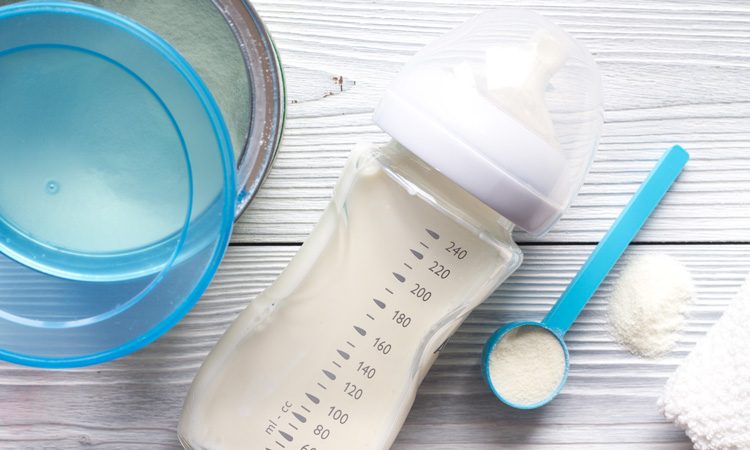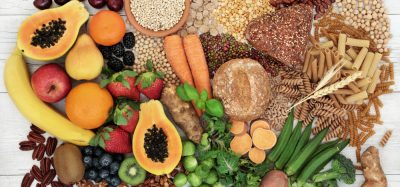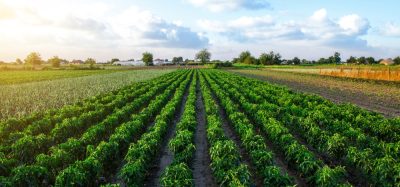Researchers use plants to enhance baby formula nutrition
- Like
- Digg
- Del
- Tumblr
- VKontakte
- Buffer
- Love This
- Odnoklassniki
- Meneame
- Blogger
- Amazon
- Yahoo Mail
- Gmail
- AOL
- Newsvine
- HackerNews
- Evernote
- MySpace
- Mail.ru
- Viadeo
- Line
- Comments
- Yummly
- SMS
- Viber
- Telegram
- Subscribe
- Skype
- Facebook Messenger
- Kakao
- LiveJournal
- Yammer
- Edgar
- Fintel
- Mix
- Instapaper
- Copy Link
Posted: 17 June 2024 | Grace Galler | No comments yet
Researchers at UC Berkeley and UC Davis have engineered plants to produce human milk sugars, potentially revolutionising infant formula nutrition.


New research led by scientists at the University of California, Berkeley, and the University of California, Davis, has revealed how genetically engineered plants could help close the gap between breast milk and infant formula nutrition by producing human milk oligosaccharides, essential sugars that support healthy gut bacteria and disease prevention.
It has been well documented that human breast milk contains a unique blend of prebiotic sugars that are can be difficult to directly replicate in commercial infant formula.
Around the world, around 75 percent of babies drink infant formula during their first six months of life. While some caregivers provide it as a babies sole source of nutrition, others use it as a supplement to breastfeeding.
Researchers admit that, “while formula provides essential food for growing babies, it currently does not replicate the full nutritional profile of breast milk”.
They has shared that this is partly due to human breast milk containing “a unique blend of approximately 200 prebiotic sugar molecules that help prevent disease and support the growth of healthy gut bacteria” although most of these sugars remain “difficult, if not impossible, to manufacture”.
The new research was published in the journal Nature Food and involved the study team reprogramming plants’ sugar-making machinery to produce a diverse array of these human milk sugars, also called human milk oligosaccharides.
According to the academics, the findings have the scope to lead to healthier and more affordable formula for babies, or more nutritious non-dairy plant milk for adults.
“Plants are these phenomenal organisms that take sunlight and carbon dioxide from our atmosphere and use them to make sugars. And they don’t just make one sugar — they make a whole diversity of simple and complex sugars,” explained Senior Author of the study Patrick Shih, an Assistant Professor of plant and microbial biology and an investigator at UC Berkeley’s Innovative Genomics Institute.
“We thought, since plants already have this underlying sugar metabolism, why don’t we try rerouting it to make human milk oligosaccharides?”
Infant formula shortage impacted health of US babies, study finds
All complex sugars, including human milk oligosaccharides, are composed of building blocks known as monosaccharides. These monosaccharides can be connected to form various chains and branched structures. What distinguishes human milk oligosaccharides is the particular set of linkages or rules for joining these simple sugars within the molecules.
To convince plants to make human milk oligosaccharides, study First Author Collin Barnum engineered the genes responsible for the enzymes that make these specific linkages. Working with Daniela Barile, David Mills and Carlito Lebrilla at UC Davis, he then introduced the genes into the Nicotiana benthamiana plant, a close relative of tobacco.
The genetically modified plants produced 11 known human milk oligosaccharides, along with a variety of other complex sugars with similar linkage patterns.
“We made all three major groups of human milk oligosaccharides. To my knowledge, no one has ever demonstrated that you could make all three of these groups simultaneously in a single organism,” shared Shih.
Following this, Barnum then worked to create a stable line of N. benthamiana plants that were optimised to produce a single human milk oligosaccharide called LNFP1.
“LNFP1 is a five-monosaccharide-long human milk oligosaccharide that is supposed to be really beneficial, but so far cannot be made at scale using traditional methods of microbial fermentation,” said Barnum, who completed the work as a graduate student at UC Davis. “We thought that if we could start making these larger, more complex human milk oligosaccharides, we could solve a problem that that industry currently can’t solve.”
Currently, only a few human milk oligosaccharides can be produced using engineered E. coli bacteria. However, separating the beneficial molecules from other toxic byproducts is an expensive process, and only a few baby formulas incorporate these sugars.
In their study, Shih and Barnum collaborated with Minliang Yang at North Carolina State University to estimate the cost of producing human milk oligosaccharides from plants on an industrial scale. They found that it would likely be more cost-effective than using microbial platforms.
“Imagine being able to make all the human milk oligosaccharides in a single plant. Then you could just grind up that plant, extract all the oligosaccharides simultaneously and add that directly into infant formula. There would be a lot of challenges in implementation and commercialization, but this is the big goal that we’re trying to move toward,” concluded Shih.








